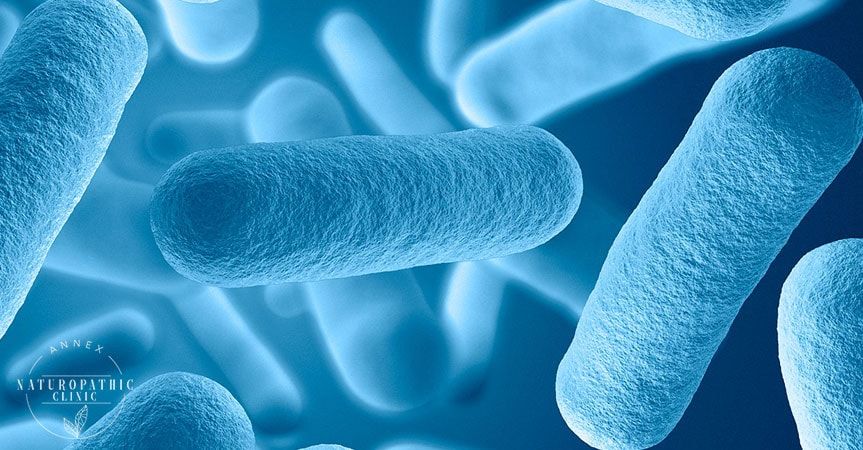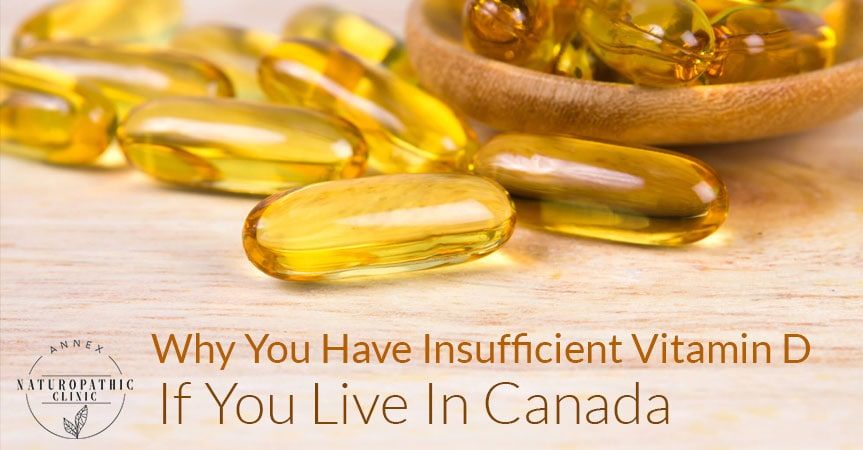Annex Naturopathic

I’m going to be writing more on the new research that I read on the microbiome.
The existing and emerging research continuously reinforces the fascinatingly strong influence these bugs have on our current health and heath outcomes.
I will get in to specifics in future blogs, but today I wanted to give a brief synopsis on how the microbiome influences our health.
This dynamic, complex system (technically, organ) of bacteria, known as the Microbiome, that resides all over and inside our bodies has been found to have such an important role in our health and the way we adapt to our external environment.
The largest portion of the human microbiome is housed in the large intestine (the gut), containing over 10 trillion bacteria (to put that in to context, that is about 10 times more than the amount of human cells in your body).
One of the most important roles of the gut microbiota is the influence on our immune system.
The our immune cells read “codes” called Pathogen Associated Molecular Patterns (PAMPs) on the bacteria that tell our immune systems what to do - these codes are specific to each bacteria - good “commensal” teaches our immune system to be balanced, and pathogenic bacteria contain codes that signal dysregulation.
Imbalances in the immune system play a role in virtually every disease.
Many seemingly separate conditions have been tied to the same imbalances of the immune system; inflammation and it’s role in hypertension, mental health and the development of cancer, and autoimmune processes and their affinity on multiple organ systems in the body.
What’s interesting about the microbiome is that these bugs are what teach our immune systems how to react and adapt to the given environment.
We have a mutualistic interaction with our microbiome, especially the gut microbiome. When the microbiome is well-balanced, nourished and overall healthy, we are the same.
The interactions of a healthy microbiome with the “host” (us) results in immune regulation/balance, efficient energy production and metabolism, great digestive health and a well-functioning liver.
Healthy microbes teach the immune system how to properly adapt to the environment, preventing unnecessary inflammation, and they also produce biochemicals and vitamins that help our bodies function efficiently.

A healthy microbiome will also protect you from invasive pathogens that want in on the real estate.
When the microbiome becomes “dysbiotic” (which means overgrowth with bad kinds of microbes, or even too much of a good type), it sends the immune system the wrong signals, promoting inflammation, and producing noxious metabolites that burden our bodies rather than helping it.
Dysbiosis of the gut microbiome in particular has been linked to many diseases such as inflammatory bowel disease, obesity, diabetes, cancer, allergies, autoimmune disease and asthma.
Dysbiosis can be caused by many different factors.
For many people it actually starts from birth.
It’s been established and well-accepted by the scientific community that babies born via C-section, or who are not breast-fed, have a different, dysbiotic, gut microbiome than babies who were born vaginally or are exclusively breast fed, leading to higher rates of asthma, allergies, Celiac disease and obesity.
This is why it’s important to intervene early with probiotics a child is not born vaginally or is not breast-fed for many reasons.
Dysbiosis can also be caused by taking multiple rounds of antibiotics, especially if not counteracted by using probiotic during and after using the antibiotics.
As antibiotics wipe out the infective bacteria, it wipes out some of our good bacteria with it, leaving space.
This type of dysbiosis makes us more susceptible to catching bad, invasive bacteria and parasites that now have opportunity to occupy this space.
Dysbiosis can also occur if you’ve caught a parasite, or some invasive bug while drinking water in a different part of the world, or if you eat something not quite cooked.
Most importantly, dysbiosis is highly promoted by an unhealthy diet.
Just like us, your microbiome needs to be fed the right substances to be healthy, strong and efficient.
If you feed it bad food, such as refined sugars and starches, transfats, a diet full of meat, and nutrient-void foods, your microbiome will not be strong, leading to poor health.
You’d be surprised how many of our everyday foods actually are considered “prebiotics” and aid in the health of our gut microbiome.
You won’t be surprised to hear that colour fruits and vegetables, healthy fibres from non-GMO grains, and colour spices are great sources of prebiotics.
Fermented foods such as saurkraut, kimchi, kefir, and properly made yogurts are major sources of prebiotics if you want to get serious about feeding the microbiome.
Naturopathic doctors have been aware of and treating the microbiome for decades - we are excellent sources for dietary recommendations on how to maintain the health of your microbiome as well as strategic treatments on how to rebalance your gut microbial flora.
Obvious signs that you might have problems with the balance of your microbiome include digestive problems, or recurrent infections of any sort - if you suffer from these afflictions, it would be helpful to consult with a doctor that can help you rebalance your flora and prevent chronic disease.
Stay tuned for more up-to-date information and interesting research on the microbiome and its affect on your daily health.
If you’re curious to learn more about this subject or would like to consult with one of our NDs feel free to book a visit or contact us.
Yours in Health,
Dr. Tanya Lee, N.D
Annex Naturopathic Clinic
572 Bloor St W #201, Toronto, ON M6G 1K1
-https://goo.gl/maps/uVRBvcyoUa62
References
- Azad MB et. al. Gut microbiota of healthy Canadian infants: profiles by mode of delivery and infant diet at 4 months. 2013 Mar 19;185(5):385-94
- Min YW, Rhee PL.The Role of Microbiota on the Gut Immunology.Clin Ther. 2015 May 1;37(5):968-75.
- Palm NW et. al. Immune-microbiota interactions in health and disease.Clin Immunol. 2015 Aug;159(2):122-127
- Rutayisire E. et. al. The mode of delivery affects the diversity and colonization pattern of the gut microbiota during the first year of infants' life: a systematic review.BMC Gastroenterol. 2016 Jul 30;16(1):86
- Schnabl B, Brenner DA. Interactions between the intestinal microbiome and liver diseases. 2014 May;146(6):1513-24
To discover more ways about health, wellness, and alternative medicine, please visit us here: ontario naturopath




 Node Smith, ND, is a naturopathic physician in Portland, OR and associate editor for NDNR. He has been instrumental in maintaining a firm connection to the philosophy and heritage of naturopathic medicine among the next generation of docs. He helped found the first multi-generational experiential retreat, which brings elders, alumni, and students together for a weekend camp-out where naturopathic medicine and medical philosophy are experienced in nature. Four years ago he helped found the non-profit, Association for Naturopathic ReVitalization (ANR), for which he serves as the board chairman. ANR has a mission to inspire health practitioners to embody the naturopathic principles through experiential education. Node also has a firm belief that the next era of naturopathic medicine will see a resurgence of in-patient facilities which use fasting, earthing, hydrotherapy and homeopathy to bring people back from chronic diseases of modern living; he is involved in numerous conversations and projects to bring about this vision.
Node Smith, ND, is a naturopathic physician in Portland, OR and associate editor for NDNR. He has been instrumental in maintaining a firm connection to the philosophy and heritage of naturopathic medicine among the next generation of docs. He helped found the first multi-generational experiential retreat, which brings elders, alumni, and students together for a weekend camp-out where naturopathic medicine and medical philosophy are experienced in nature. Four years ago he helped found the non-profit, Association for Naturopathic ReVitalization (ANR), for which he serves as the board chairman. ANR has a mission to inspire health practitioners to embody the naturopathic principles through experiential education. Node also has a firm belief that the next era of naturopathic medicine will see a resurgence of in-patient facilities which use fasting, earthing, hydrotherapy and homeopathy to bring people back from chronic diseases of modern living; he is involved in numerous conversations and projects to bring about this vision.
